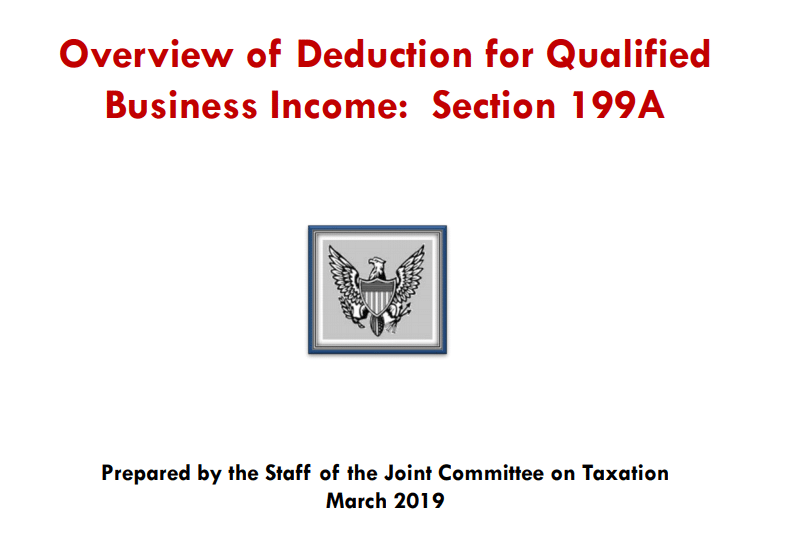One of the most discussed provisions of the Tax Cuts and Jobs Act (TCJA), which was enacted in December 2017, is the addition of the Qualified Business Income (QBI) deduction available under new Internal Revenue Code §199A. This provision allows equity owners of qualifying pass-through entities to deduct up to 20% of the qualifying business income that is passed through to them and reported on their personal returns.
The significance of the deduction cannot be overstated. Elimination of 20% of the pass-through income essentially works to reduce the highest marginal rate on this income from 37% to 29.6%.
Based on a recent study and analysis prepared by the nonpartisan Joint Committee on Taxation, it is estimated that out of 39.2 million tax returns that include business income reported on Schedules C, E, and F, 26.8 million (approximately 68%) will be eligible for the new “pass-through” deduction for the 2019 taxable year. While no specific indication was made referencing the 2018 taxable year, it would seem that similar numbers would apply.
On March 13, the Joint Committee released a slideshow presentation that provided an overview of the IRC §199A deduction for Qualified Business Income.
The Joint Committee’s assessment finds that 66% of the share of the deduction’s total income tax benefit, or impact, will go to taxpayers with income above the deduction’s $157,500 ($315,000 joint return) threshold. As might be expected, this revelation provided immediate ammunition for opponents of the tax legislation.
The new QBI deduction is currently considered to be one of the most complex and controversial provisions of the TCJA. There is no question that tax practitioners, as well as affected taxpayers, have struggled mightily in understanding the mechanics of the new rules.
To address the many complexities encompassed in the new rules, the Internal Revenue Service released interpretive Treasury regulations on the pass-through deduction in January, and corrected final regulations in February. While these regulations cleared up a number of the open questions regarding the pass through deduction, many questions remain unsettled, and the provision continues to divide lawmakers.
Many Democrats on Capitol Hill have criticized the new law as primarily benefiting wealthy taxpayers, and they have amplified their ongoing criticism of the GOP’s pass-through deduction after the Joint Committee released its overview. Opponents of the legislation look at the fact that two-thirds of the tax cuts from this deduction are going to households making more than $300,000 per year, and contend that these are not the struggling small business owners who were told would benefit from this provision.
As is often the case, lawmakers on both sides of the aisle have misinterpreted the tax legislation. The pass-through deduction was not specifically introduced to benefit the smallest businesses, but to provide a tax reduction for U.S. businesses that are creating jobs and investing in equipment, thereby taking important steps to fuel the overall economy.
While it is true that many pass-through businesses will realize substantial income tax benefits from the new provision, these taxpayers have historically been burdened with a tax rate at the equity-owner level that exceeded the pre-TCJA corporate rate of 35%. Many pass-through business owners were paying a top federal marginal rate on business income of 39.6%, in addition to other taxes.
Importantly, it should be noted and not dismissed, that a significant portion of the income generated by pass-through entities that is required to be reported on the equity owners’ return is not cash income. Thus, reporting $100,000 of income from an S corporation does not always equate to a cash distribution of $100,000. In fact, such a circumstance is rare.
Using business funds to pay higher taxes generally works to limit the ability of those companies to invest in additional people and equipment. As such, the new deduction not only serves to create an opportunity to further economic investment, but it also puts these companies on a more level playing field with regular corporations paying tax after the TCJA at 21%.
Should you have questions or comments, please contact Bob Grossman or Don Johnston at 412-338-9300.
Related posts
Final “Corrected” Treasury Regulations Released on QBI Deduction
GYF Tax Alert on Sec. 199A Pass-through Deduction
Qualified Business Income Deduction Clarified with the Release of Proposed Rules






